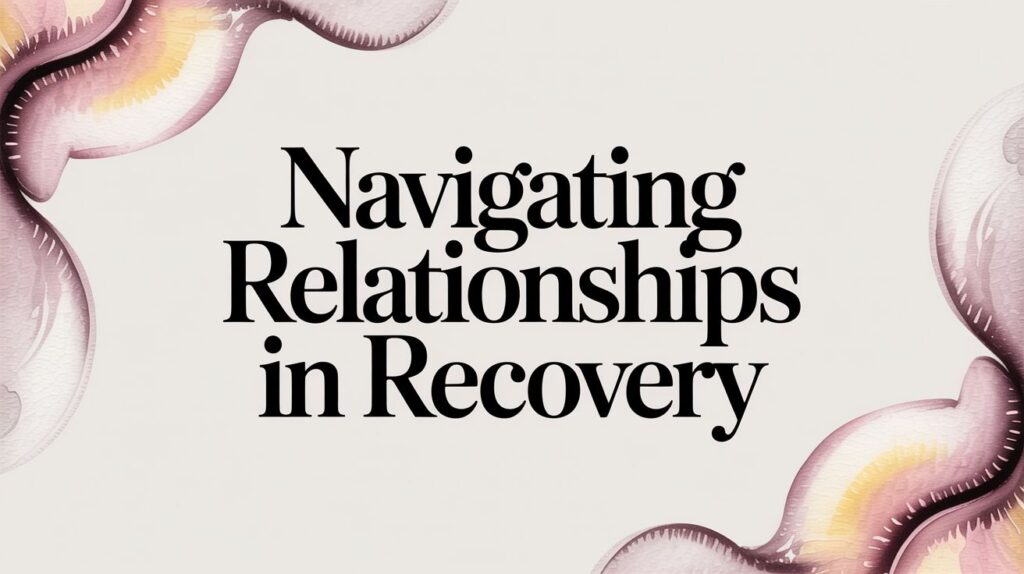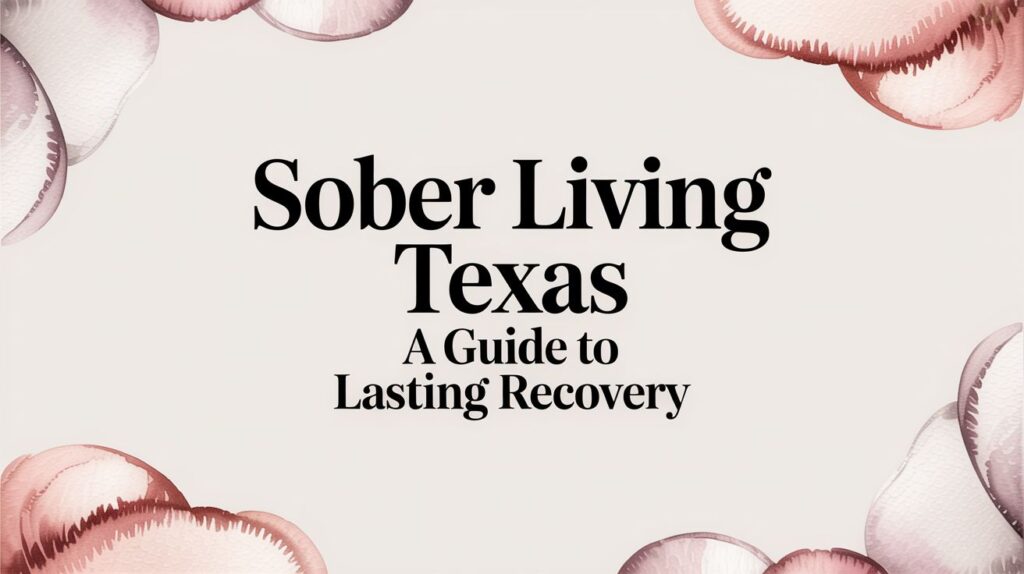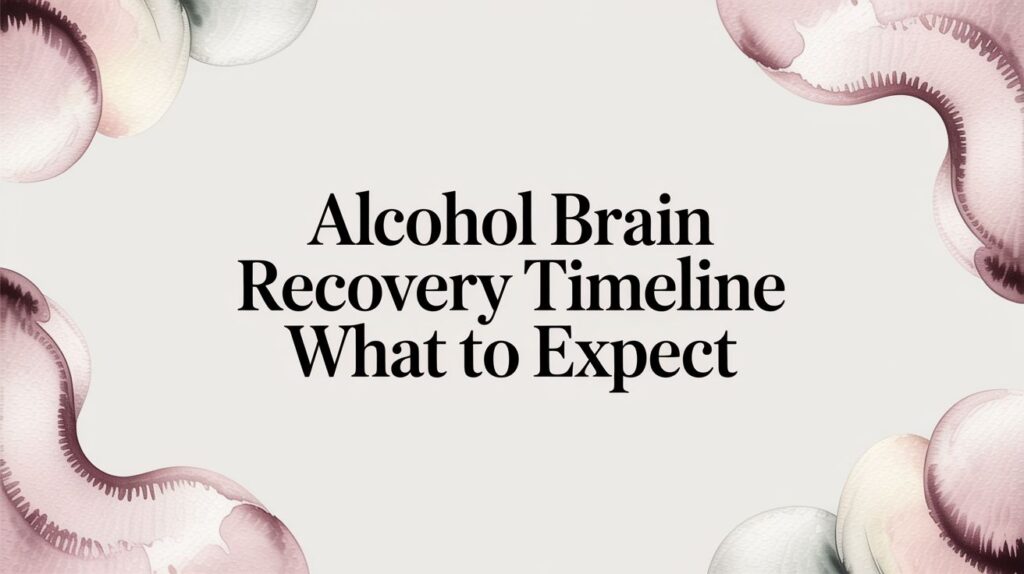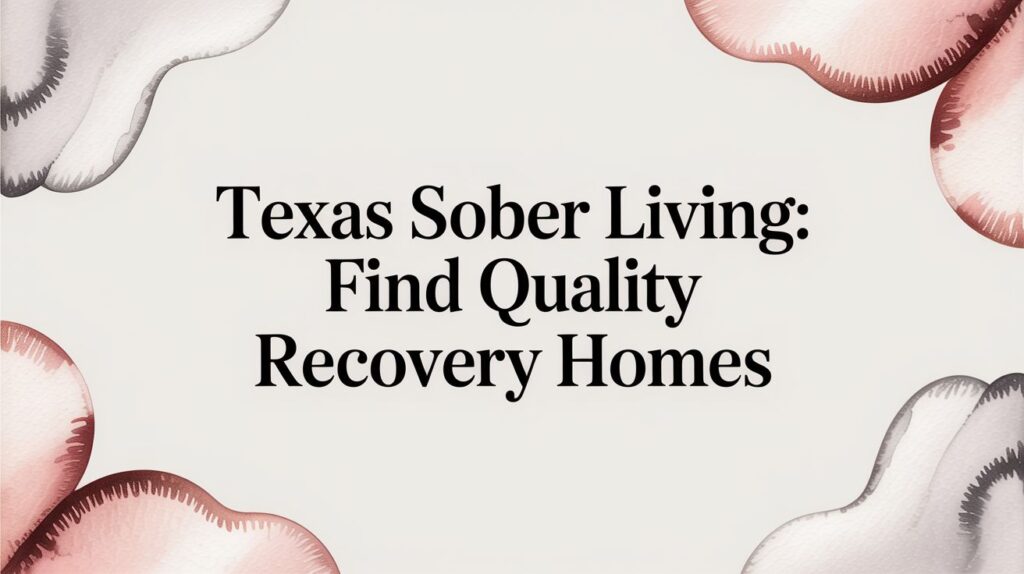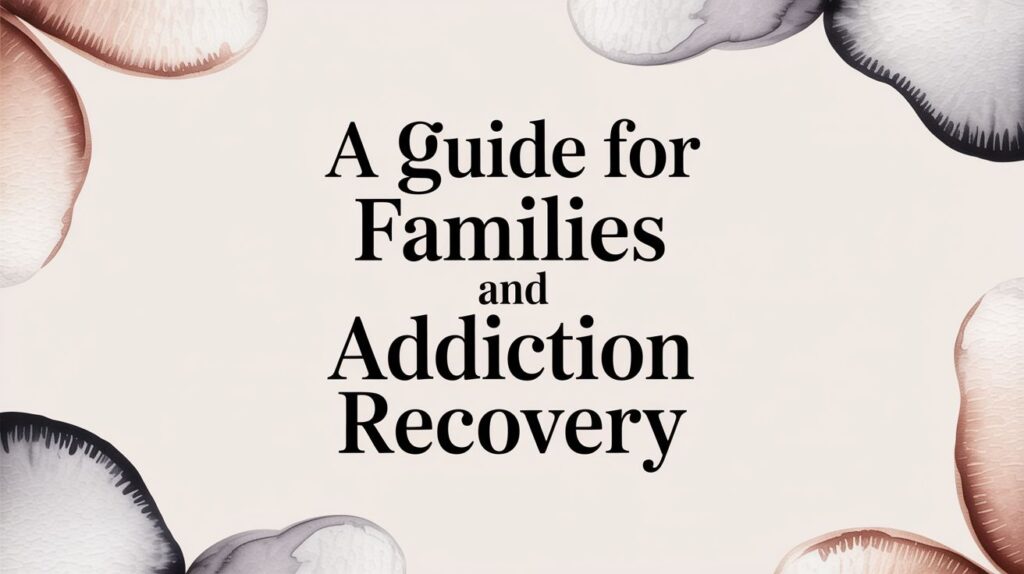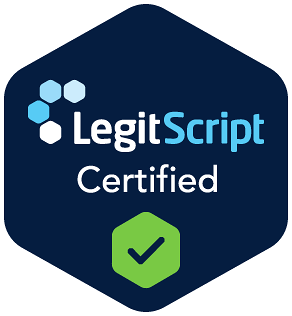Medication Assisted Treatment (MAT) isn't just about swapping one substance for another; it's a “whole-patient” approach that treats substance use disorders with the seriousness they deserve. The strategy combines FDA-approved medications with dedicated counseling and behavioral therapies.
Think of it like using a cast to set a broken bone. The medication acts like the cast, providing stability and relief from the intense physical symptoms. This crucial support makes it possible to do the deeper work of healing the underlying issues through therapy.
Understanding Medication Assisted Treatment
Medication Assisted Treatment is a clinically proven, evidence-based method for tackling addiction, especially for Opioid Use Disorder (OUD) and Alcohol Use Disorder (AUD). It gets away from the outdated, one-size-fits-all model by treating addiction as the complex medical condition it is, addressing both the brain’s chemistry and a person's behaviors at the same time.
This integrated model uses specific medications to accomplish a few key things: normalize brain chemistry, block the euphoric high from opioids or alcohol, and quiet the overwhelming physical cravings. By doing this, it helps stabilize body functions without the destructive side effects of the substance being misused. This stabilization is the first, essential step toward building a foundation for lasting recovery.
The Three Pillars of MAT
But medication alone isn't the whole story. The real power of MAT comes from its comprehensive structure, which is built on three interconnected pillars. To fully grasp what is rehab in the context of MAT, it's helpful to see how these elements work together as a single, unified strategy.
The core components of MAT—medication, counseling, and support—are not standalone treatments but are woven together to create a strong framework for recovery. The visual below breaks down how each piece contributes to the whole.

The market for this integrated model is a testament to its effectiveness. Valued at roughly USD 10.42 billion, it's projected to grow substantially, possibly hitting over USD 31 billion in the next ten years as more people recognize its life-saving potential.
The following table provides a clear summary of how these components come together to form a complete system of care.
The Three Pillars of Medication Assisted Treatment
| Component | Role in Treatment | Example |
|---|---|---|
| FDA-Approved Medications | Stabilize brain chemistry, reduce cravings, and block the effects of opioids or alcohol. This creates a physiological foundation for recovery. | Buprenorphine (Suboxone®) for OUD, which eases withdrawal symptoms and reduces cravings without producing a high. |
| Counseling & Behavioral Therapy | Address the psychological roots of addiction, teach new coping skills, and help change self-destructive thought and behavior patterns. | Cognitive Behavioral Therapy (CBT) to identify triggers and develop practical strategies to manage them without substance use. |
| Community & Peer Support | Provide a network of accountability, shared experience, and encouragement that reduces isolation and supports long-term lifestyle changes. | Attending a 12-step meeting or a SMART Recovery group where individuals share their struggles and successes. |
Together, these pillars create a treatment approach that is far more effective than any single component could be on its own.
The core idea behind MAT is simple but powerful: By addressing the biological aspects of addiction with medication, individuals are given the mental clarity and emotional stability needed to fully engage in therapy.
This is where the real work begins. Counseling helps people develop new ways to cope with stress, work through underlying trauma, and reshape the behaviors that kept them stuck in addiction. At the same time, support systems offer the community and network essential for long-term success. It's this complete system of care that dramatically improves outcomes and makes sustainable recovery not just a hope, but a real possibility.
How MAT Medications Support Recovery
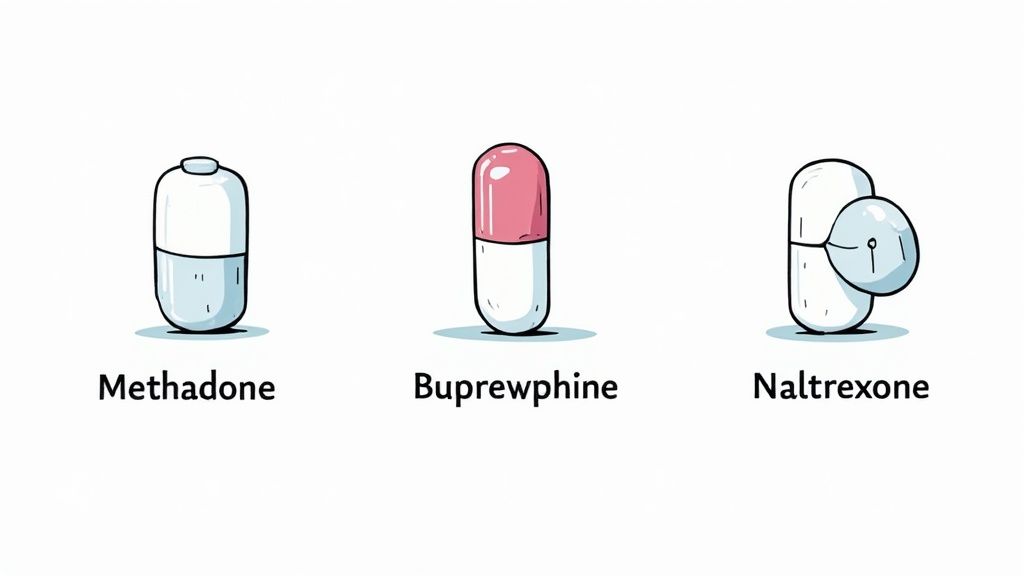
It’s a common misconception that medications used in MAT are just a substitute for illicit drugs. They’re not. Think of them less as a cure and more as powerful, specialized tools that open up a window of opportunity for real recovery to begin. They work by targeting the very same receptors in the brain that opioids and alcohol hijack, but they do it in a controlled and safe way.
Substance use throws brain chemistry into chaos. These medications help restore balance. Instead of the crushing cycle of highs and lows, they provide a biological stability that’s often impossible to achieve otherwise. By dialing down the debilitating physical withdrawal and the relentless cravings that drive relapse, they give a person the breathing room they need to actually engage in therapy and start healing.
Buprenorphine: The Gentle Key
One of the most widely used medications for Opioid Use Disorder (OUD) is buprenorphine, which you might know by brand names like Suboxone®. To understand how it works, picture the brain’s opioid receptors as locks. A drug like heroin or fentanyl is like a key that fits perfectly, turns the lock all the way, and unleashes a powerful, euphoric flood.
Buprenorphine is a different kind of key. It’s specially designed to fit the same lock but only turn it part-way. This partial activation is just enough to trick the brain into thinking it’s received an opioid, which shuts down withdrawal symptoms and cravings. But because it doesn’t turn the lock completely, it doesn’t produce the same intense high. It also has a “ceiling effect,” making the risk of overdose much, much lower.
Naltrexone: The Receptor Shield
Another highly effective medication, naltrexone (often known by the brand name Vivitrol®), takes a totally different approach for both OUD and Alcohol Use Disorder (AUD). If buprenorphine is a partial key, naltrexone is more like a shield or a block for the lock itself.
Naltrexone binds tightly to opioid receptors and simply blocks anything else from getting in. If someone uses opioids while on naltrexone, the drug has nowhere to attach—it can’t produce any euphoric effect. This simple mechanism breaks the psychological link between using the substance and feeling the reward, effectively taking away the incentive to use. It works in a similar way for alcohol by dampening the pleasurable feelings associated with drinking.
Globally, the use of these life-saving treatments varies depending on local healthcare systems, but the trend is clear. Opioid antagonists like naltrexone are projected to capture a major slice of the global market, with countries from Germany to South Korea increasingly adopting these therapies. You can dig into more of the data on global OUD treatment market trends from sources like Future Market Insights.
The goal of MAT medications isn’t to create a substitute addiction. It’s to provide the biological stability necessary for a person to rebuild their life, develop new coping skills, and address the root causes of their substance use disorder through therapy.
When you see how these medications function, it becomes clear they are a medical solution for a medical problem. They give people the crucial support needed to step away from the physical chaos of addiction and finally begin the hard but rewarding work of long-term healing.
The Essential Role of Therapy in MAT
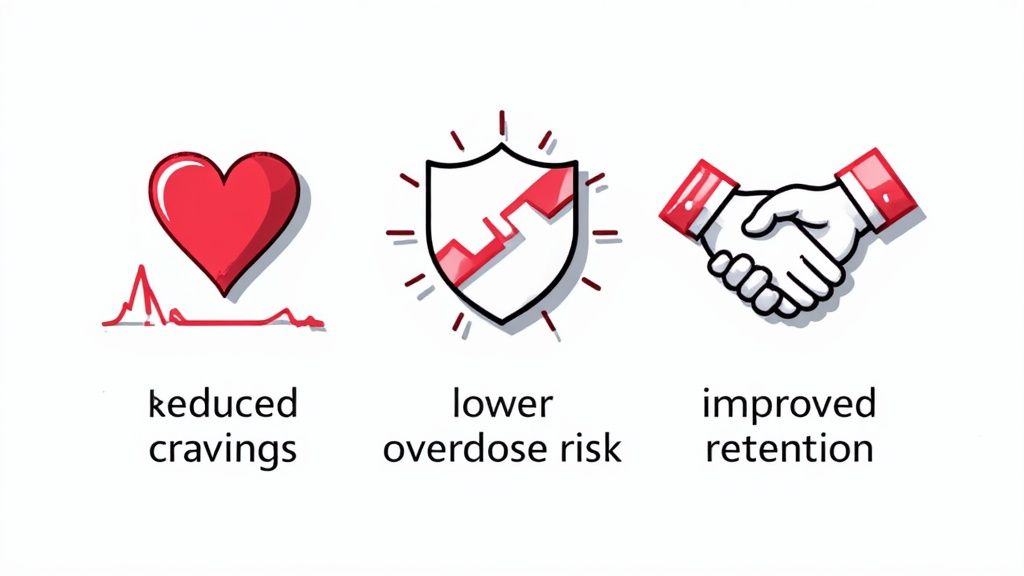
Medication is a game-changer in recovery, but it’s only half the story. Think of it like a cast for a broken bone—it stabilizes the injury and stops further damage, but it doesn't teach you how to walk again. That’s where therapy and counseling play a non-negotiable role in Medication Assisted Treatment.
Addiction isn’t just a physical craving; it physically rewires the brain, carving deep grooves of habit and thought that drive someone back to using. The right medication can quiet the storm of withdrawal and cravings, creating a precious window of calm and clarity. But therapy is what helps a person actively fill in those old grooves and pave new, healthier neural pathways.
This one-two punch is what makes MAT the gold standard. While the medicine handles the biology, therapy gets to the heart of the psychological and behavioral roots of the disorder.
Building New Skills and Thought Patterns
One of the most powerful tools in the MAT therapy toolbox is Cognitive-Behavioral Therapy (CBT). It’s a practical, hands-on approach that helps people pinpoint the exact thoughts, feelings, and situations that trigger the urge to use. It’s like learning to read the warning signs on a trail before you wander off course.
CBT doesn't just identify triggers; it gives you a toolkit of coping strategies to manage them in the moment. Instead of reacting on autopilot, you learn to hit pause, question the destructive thought, and consciously choose a healthier response.
Other vital therapeutic strategies often woven into a good MAT plan include:
- Dialectical Behavior Therapy (DBT): This is all about building skills to manage intense emotions, tolerate distress without turning to substances, and navigate tricky relationships.
- Contingency Management: This approach uses positive reinforcement—like gift cards or other tangible rewards—for healthy behaviors, such as attending every therapy session or having a clean drug screen.
- Family Therapy: Addiction puts immense strain on relationships. Family therapy works to repair that damage, educate loved ones, and build a strong, informed support system right at home.
These aren't just "talk therapy" sessions. They are active training grounds for learning and practicing real-world life skills. They give people the power to handle stress, regulate their emotions, and walk through life without needing alcohol or drugs as a crutch.
In MAT, medication opens the door to recovery, but therapy provides the map and the tools needed to walk through it and build a new life on the other side.
The Foundation for Long-Term Success
Ultimately, the goal isn't just to get through today; it's to build a life in recovery that lasts. The skills learned in therapy are what carry a person long after their medication needs might change or cease. This is what builds the emotional muscle and self-awareness needed to navigate life's challenges and prevent relapse.
Study after study confirms it: combining medication with behavioral therapy dramatically improves how long people stay in treatment and significantly cuts down on illicit drug use. This synergy transforms treatment from a temporary fix into a permanent foundation for change. It ensures people aren't just surviving without substances—they're truly thriving.
Determining Who Is a Candidate for MAT

Deciding to start Medication Assisted Treatment is a major step, and it’s certainly not a one-size-fits-all solution. Think of it as a personalized medical decision, made between you and your healthcare provider after a thoughtful conversation.
The primary candidates for MAT are individuals who have been diagnosed with either Opioid Use Disorder (OUD) or Alcohol Use Disorder (AUD).
The journey kicks off with a thorough assessment where a healthcare professional looks at the whole picture—not just the substance use itself. This means digging into your medical history, the specific patterns of your use, and, just as importantly, where you are in your own readiness for change. It’s a collaborative process designed to find the safest, most effective path forward for you.
The Assessment Process
So, what are providers looking for? They're trying to determine if MAT is the right fit by evaluating a few key indicators. This comprehensive review is all about understanding your unique circumstances so the treatment plan actually meets your needs.
Key factors include:
- Previous Treatment History: Have you tried abstinence-only models before without long-term success? MAT is often a game-changer when other methods haven't led to sustained recovery.
- Severity of Dependence: The assessment will gauge the physical and psychological level of dependence. This helps the medical team choose the right medication and the right starting dose.
- Risk of Overdose: For anyone with OUD, a high risk of overdose is a critical factor. In these cases, MAT is often the safest and most life-saving option available.
- Co-occurring Conditions: The presence of other mental or physical health issues is always considered. The goal is to create an integrated plan that addresses every aspect of your well-being.
The core question is always: Will this treatment provide the stability needed to reduce harm and create a genuine opportunity for recovery? It's about matching the person with the level of care that gives them the best shot at success.
Who Benefits Most from MAT
While MAT is a powerful tool, it works best as part of a larger strategy. The people who see the most profound benefits are those who are also committed to engaging in therapy and building a solid support network.
For many, this might involve structured programs that offer consistent support and counseling. For instance, learning about what is an intensive outpatient program can show you how therapy can be woven into your life alongside MAT, all while you maintain your daily responsibilities.
In the United States, MAT is a vital tool in the fight against the opioid epidemic, with millions receiving this care for OUD. But despite its proven effectiveness, a major treatment gap persists; millions of people over the age of 12 who need help for substance abuse simply don't receive it. This gap is especially alarming for adolescents, highlighting the urgent need for accessible, evidence-based care. You can find more insights in these drug abuse statistics on drugabusestatistics.org.
The Proven Benefits of Medication Assisted Treatment
It’s easy to think of Medication Assisted Treatment as just managing symptoms, but the reality is much bigger. This approach delivers life-changing results, backed by piles of evidence showing it restores health, saves lives, and helps rebuild communities from the inside out. MAT provides the biological stability people need to truly show up for the hard work of recovery.
One of the clearest wins is a dramatic drop in illicit drug use. By stabilizing brain chemistry and dialing down the constant roar of cravings, MAT helps break the cycle of compulsive use. Think of it as giving someone a solid foundation to stand on. With that biological support in place, they can finally focus on therapy and build new coping skills instead of spending every ounce of energy just fighting their own body. The result is a stronger foothold in long-term sobriety.
Reducing Harm and Saving Lives
The data doesn’t lie: MAT is an incredibly powerful tool for preventing fatal overdoses. Study after study confirms that people engaged in MAT have a much lower risk of dying from an overdose compared to those in abstinence-only programs. It also keeps people in treatment longer, which is one of the biggest predictors of long-term success.
By keeping individuals in a structured, supportive environment, MAT significantly reduces the risk of overdose and increases patient survival rates. It is one of the most effective life-saving interventions we have for opioid use disorder.
The positive ripple effects spread far beyond just one person, creating tangible benefits for society as a whole. Research consistently points to several key outcomes:
- Improved Public Health: MAT is linked to a major decrease in the transmission of infectious diseases like HIV and hepatitis C, which often spread through intravenous drug use.
- Reduced Criminal Activity: When people are stable and no longer driven by the need for illicit drugs, crime rates associated with substance use disorders go down.
- Better Outcomes for Pregnant Individuals: MAT is the standard of care for pregnant women with a substance use disorder, leading to healthier outcomes for both mother and baby.
Rebuilding Lives and Fostering Stability
The benefits of MAT create a positive snowball effect in a person’s life. With newfound stability, people are far more likely to find and keep a job—a cornerstone of building an independent, fulfilling life in recovery. This approach isn't just about treating an illness; it's about helping people put the pieces of their lives back together, from the ground up.
By combining medication, therapy, and support, MAT gives people the full toolkit they need for lasting change. To get a better sense of the entire process, it’s helpful to understand how rehab works as a complete journey. This integrated model helps people not just survive, but truly start to thrive again.
Debunking Common Myths About MAT
Misinformation can build a powerful wall between someone and life-saving care. When it comes to Medication Assisted Treatment, these myths often create stigma and fear, preventing people from seeking a proven medical solution.
Let’s clear the air by tackling these misconceptions head-on.
One of the most persistent falsehoods is that MAT is just “trading one addiction for another.” This idea comes from a deep misunderstanding of how these medications actually work inside the brain.
Illicit substance use is chaotic and uncontrolled, creating jarring highs and crushing lows. In sharp contrast, MAT medications are prescribed by a doctor and given in precise, therapeutic doses. They don't produce a "high." Instead, they stabilize brain chemistry and relieve the physical agony of withdrawal, giving a person the mental space to actually engage in recovery.
It Is Not a Crutch
Another common myth is that using medication is a “crutch” or a sign of weakness. This perspective completely misses the medical nature of addiction.
Think of it this way: no one would call a person with diabetes "weak" for needing insulin. Their body requires it to function correctly. Similarly, MAT provides essential physiological support for a brain that has been physically altered by substance use. It's a medical tool that corrects a biological imbalance.
MAT isn’t a shortcut or a crutch. It's the stable foundation that allows a person to do the difficult but essential work of rebuilding their life through therapy, counseling, and developing new coping skills.
By quieting the physical side of addiction, these medications give individuals the strength and stability they need to confront the psychological and behavioral parts of the disorder. It frees them from the constant, exhausting battle against cravings, letting them focus on true, sustainable healing. That isn't weakness; it's a smart, evidence-based strategy for long-term success.
Common Questions About MAT
It's completely normal to have practical questions when looking into any kind of medical care. For a significant step like Medication Assisted Treatment, getting straight answers to your concerns is the best way to make a decision you feel good about.
How Long Does Medication Assisted Treatment Last?
There’s no set schedule for MAT. The right timeline is unique to each person and is a decision made between you and your healthcare provider. For some, MAT is a short-term solution to get stable, while for others, it’s a long-term maintenance plan that supports their recovery for years.
The whole point is to stick with the treatment for as long as it's helping you. Deciding to taper off or stop the medication is always done carefully and under a doctor's watch to keep you safe and steady in your recovery.
The right duration for MAT is whatever length of time best supports a person's sustained recovery and well-being. It is a medical decision, not a moral one.
Are There Side Effects to MAT Medications?
Yes, like any prescription, the medications used in MAT can have side effects. With buprenorphine and methadone, you might run into things like constipation or drowsiness, but these often fade as your body gets used to the medicine. Naltrexone can sometimes bring on nausea or a headache.
This is why it's so important to be completely open with your provider about your medical history. When your clinical team has the full picture, they can manage any side effects and make sure the treatment is a safe, effective fit for you.
How Can I Find a Qualified MAT Provider?
Finding a provider who is both certified and compassionate is the most important first step. A great place to start is the online Treatment Locator tool from SAMHSA (the Substance Abuse and Mental Health Services Administration). You can also ask your primary care doctor for a referral you can trust or call your insurance company for a list of in-network providers who offer MAT.
At Altura Recovery, we provide evidence-based Medication Assisted Treatment that’s fully integrated with therapy and real-world support. Our team is here to answer your questions and help you build a lasting recovery. Learn more about our approach at https://www.alturarecovery.com.


